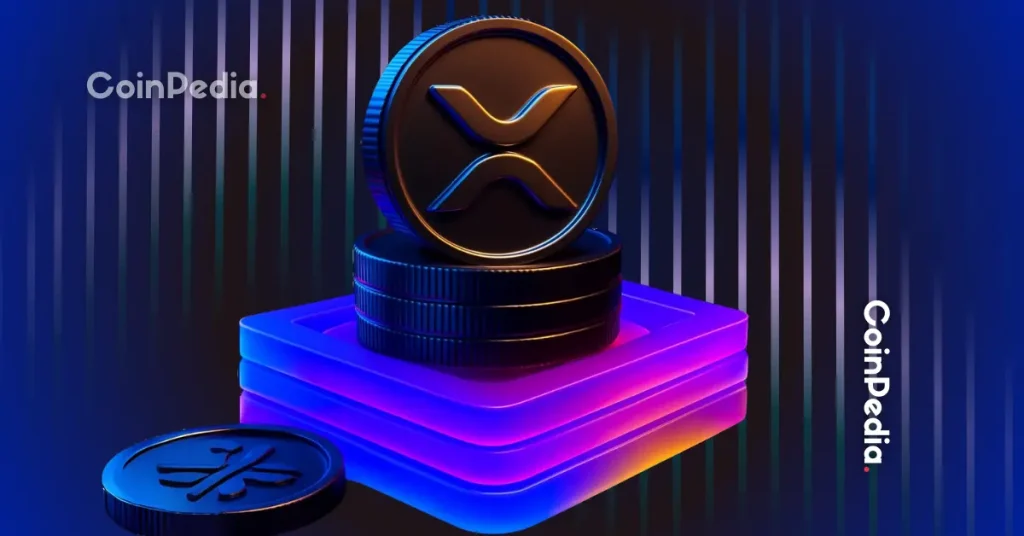6 Best Altcoins For Cross-Border Payments: DigiTap Emerges Over XRP & XLM

The post 6 Best Altcoins For Cross-Border Payments: DigiTap Emerges Over XRP & XLM appeared first on Coinpedia Fintech News
Cross-border payments are big business and are on track to rise over 50% by 2030, hitting $290 trillion. Crypto has a natural advantage over banks, as it can move money instantly in seconds for fractions of a cent, compared to several days with fees averaging 6.2%.
But what are the best altcoins for cross-border payments in 2025? The tokens on this list all have real use cases, huge adoption potential, and the ability to shift the world toward real-time, borderless money.
1. Digitap ($TAP)
Digitap ($TAP) is still in its presale and has quickly emerged as a leading contender in the cross-border race. Digitap is delivering an omni-bank app that unifies crypto and fiat into one seamless platform. Users can spend anywhere Visa is accepted, link their cards to Apple Pay or Google Pay, and even generate unlimited, no-KYC virtual cards for anonymous transactions.
It leverages AI to optimize routing, ensuring that users’ funds are always sent on the most cost-effective rails. From a single interface, users now have access to hundreds of cryptos and fiat currencies.
The $TAP token powers this ecosystem. It has a fixed supply of 2 billion and deflationary mechanics linked to platform growth through a revenue buyback and burn scheme. Presale momentum has been overwhelmingly strong, with over $110,000 already raised. And with the $TAP at just $0.0125, the upside is huge for early adopters.
Digitap stands out because its product is already live today on iOS, Android, and desktop.

2. Ripple (XRP)
Ripple has been a leader in cross-border payments for nearly a decade. The XRP token is central to the company’s global payments solution that partners with financial institutions to provide instant liquidity and settlement. XRP is fast and cheap, with transaction costs often less than a penny, making it an easy choice for institutional-grade settlement.

Despite its strengths, XRP’s price has struggled, and with a market cap of over $184 billion, the early upside is already gone. XRP is very much the incumbent with the most to lose to disruptors like Digitap in the race to transform cross-border payments.
3. Stellar (XLM)
Stellar was designed specifically for remittances and financial inclusion. The Stellar network enables near-instant transfers of both fiat-backed stablecoins and digital assets, targeting underserved regions where traditional banking access is limited.
Similar to XRP, XLM already has a huge market cap and has failed to innovate and cause real disruption despite being live for years.
4. Quant (QNT)
Quant takes a different approach to cross-border interoperability by focusing on connecting blockchains and financial systems through its Overledger Network. Rather than moving payments directly, QNT acts as a “bridge” layer, enabling banks, enterprises, and payment providers to connect to multiple blockchains via one standardized API.
5. Celo (CELO)
Celo is a mobile-first blockchain designed for peer-to-peer payments and remittances. Its goal is to make crypto accessible via smartphone, targeting users in emerging markets. CELO provides low-cost, mobile-native payments and has been much more successful than Stellar in driving adoption.
The project has focused heavily on DeFi integrations, mobile UX, and grassroots adoption. CELO trades at roughly $0.30 with a market cap of $187 million, making it a mid-cap bet on emerging market financial access.
6. Hedera (HBAR)
Hedera Hashgraph is a high-speed distributed ledger that has carved out a niche in payments and enterprise settlement. With transaction speeds of 10,000+ transactions per second and fees measured in fractions of a cent, Hedera is one of the most scalable networks in the space.
Why Digitap Leads: Could it be the Best Crypto Investment of 2025?
While XRP and XLM paved the way for cross-border transactions, Digitap has captured investor imagination by combining a live product with aggressive improvements in user experience. The ability to spend crypto like cash via Visa, generate no-KYC cards instantly, and manage global accounts in one app gives Digitap a massive advantage and real-world application from day one.
With the presale already raising $110,000 and a current price of $0.01250, Digitap offers the most asymmetric upside. However, this price won’t last long with tiered price increases throughout the presale.
Cross-border payments are a trillion-dollar market, and crypto is finally addressing the inefficiencies that banks have long ignored. While XRP and XLM remain important, Digitap’s combination of live product, Visa-backed card features, and presale momentum makes it the standout pick for 2025. For investors chasing both adoption and upside, $TAP is the altcoin to watch this year.
Digitap is Live NOW. Learn more about their project here:
Presale https://presale.Digitap.app
Social: https://linktr.ee/Digitap.app
You May Also Like

Hong Kong’s Watchful Eye on the Rise of Crypto Treasuries

Chinese Man Arrested in Bangkok Over Alleged $14M Crypto Ponzi Scheme
